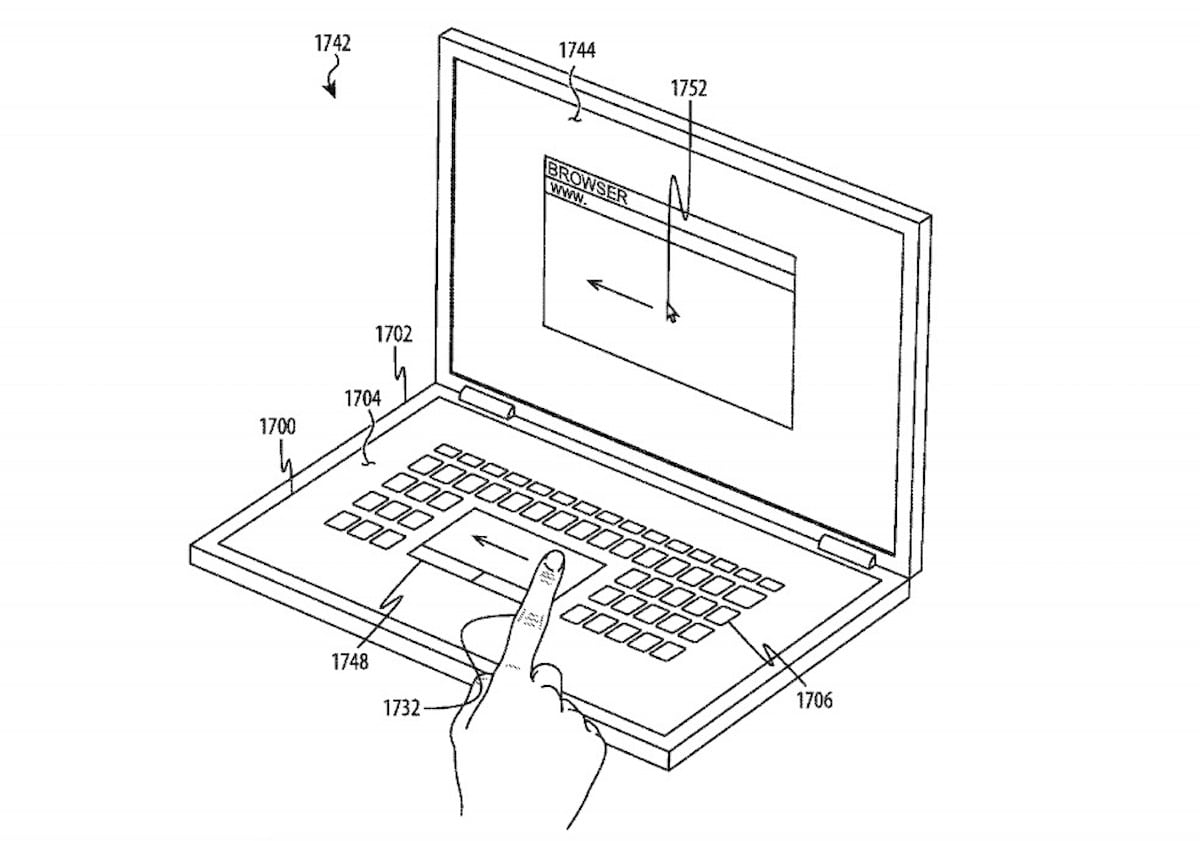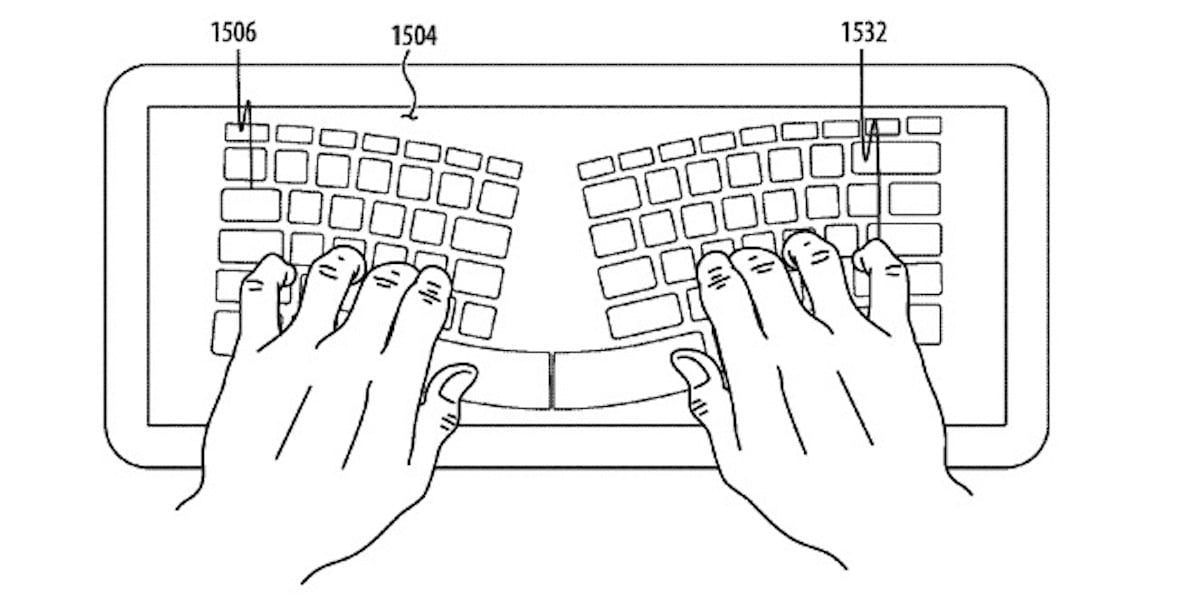The U.S. Patent and Trademark Office granted Apple a new patent describing a solid-state keyboard tech for future MacBooks. Titled “Keyless keyboard with force sensing and haptic feedback”, the new filing is an additional patent by the company on replacing the traditional keyboard with a glass display equipped with multiple touch sensors.
Previously, the U.S. Patent and Trademark Office granted Apple the “Configurable force-sensitive input structure for electronic devices” patent and another patent on a set of new features for MacBooks including a virtual keyboard. The new filing describing similar keyboards for MacBooks as the older filings showcase that the tech company is diligently pursuing the tech.

A glass keyboard with touch sensors on MacBook will offer more flexibility
In the filing, Apple explains that the conventional keyboard with physical keys “lack” flexibility to adapt to new OS changes and users’ needs. Therefore, a glass solid-state keyboard with a touch force sensing system for different input regions will enable users to configure MacBook’s keyboard as per their needs and preferences.
Apple’s application claims traditional key-based inputs “lack the flexibility to accommodate expansive features offered by newer devices, operating systems, and software,” and are “unable to adapt to different user needs and preferences.” While touchscreen inputs have the potential for offering alternative inputs to the user, the “flat, inflexible input surface” provides little or no tactile feedback to the user.

Furthermore, the proposed keyboard will support haptic feedback to offer a response for each key “press”.
Images in the filing depict a keyboard peripheral that uses a long touch panel where the key images appear. There is also a depiction of a notebook that seems to have the entire lower section, typically reserved for the keyboard and the trackpad, replaced by a single large panel.
In both cases, the keyless keyboard changes what is shown depending on the user’s need. This can include showing a trackpad area in the middle of the keyboard, and rearranging the layout to one that is more ergonomic for the user’s hand positioning.
via Apple Insider